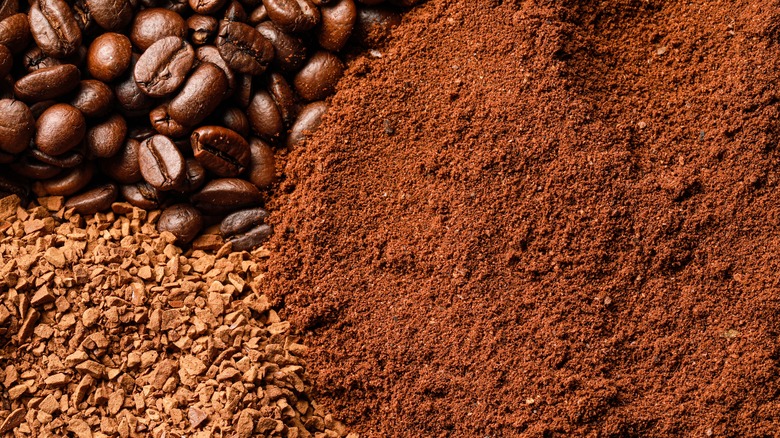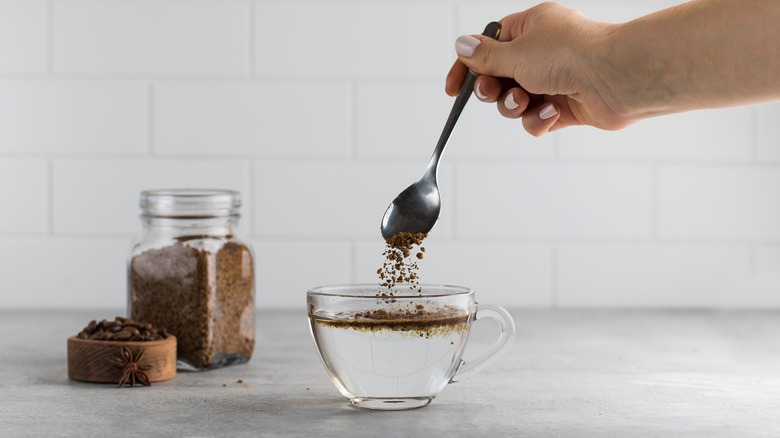Here's Why Instant Coffee Is Usually Cheaper Than Fresh Beans
While robusta is the type of coffee bean most commonly used in instant coffee, arabica, the lighter cousin of robusta beans, is a viable option as well. After all, arabica is the most popular species of coffee bean worldwide, beloved for its smooth flavor profile; a balmy essence that tastes mildly sweet and smells like you just walked out of a berry garden. However, the production process from bean to package ultimately determines the choice of coffee bean used and the final cost of instant coffee.
Consider that a bean such as robusta is relatively easier to grow due to its pest-repelling high caffeine content. Farmers can grow robusta at a large scale, and manufacturers can process it in batches. A high caffeine amount also makes robusta coffee taste bitter, thereby lowering its demand in the coffee market. The solution is to convert this lower-quality bean into instant coffee that's more pleasant on the palate.
The ability to process coffee beans in large batches means manufacturers can use them to produce more instant coffee at a time. This leads to a lower production cost for instant coffee, which earns it a cheaper price on the market. Additionally, instant coffee granules are small and compact, taking up less volume than fresh beans and thereby lowering shipping costs. Instant coffee also requires less packaging materials than fresh beans, further reducing the cost and making it a cheaper choice than fresh beans.
Producing instant coffee
The process of producing instant coffee includes grinding, roasting, then brewing coffee beans. After that, the coffee is dehydrated (spray or freeze-dried) to form the crystals we refer to as instant coffee. During this process, the coffee beans lose a significant amount of caffeine, which leads to a less bitter taste that you can better appreciate in a drink like our coffee smoothie.
The ideal bean with a caffeine quantity it can stand to lose is robusta — it carries almost twice the amount of caffeine as arabica beans and its bitter nature mellows once processed into instant coffee. This process of producing instant coffee is lengthier than that of producing fresh ground coffee beans, like those used for bold cold brew coffee. The latter involves roasting and then grinding coffee beans to the desired grind size.
Though the more complicated process of producing instant coffee could lead us to think it should be more expensive, the price determinants point back to other factors, such as crop yields and packaging. Due to the high crop yield that leads to large-scale production of instant coffee and because instant coffee granules are more compact, instant coffee remains cheaper than fresh beans.

